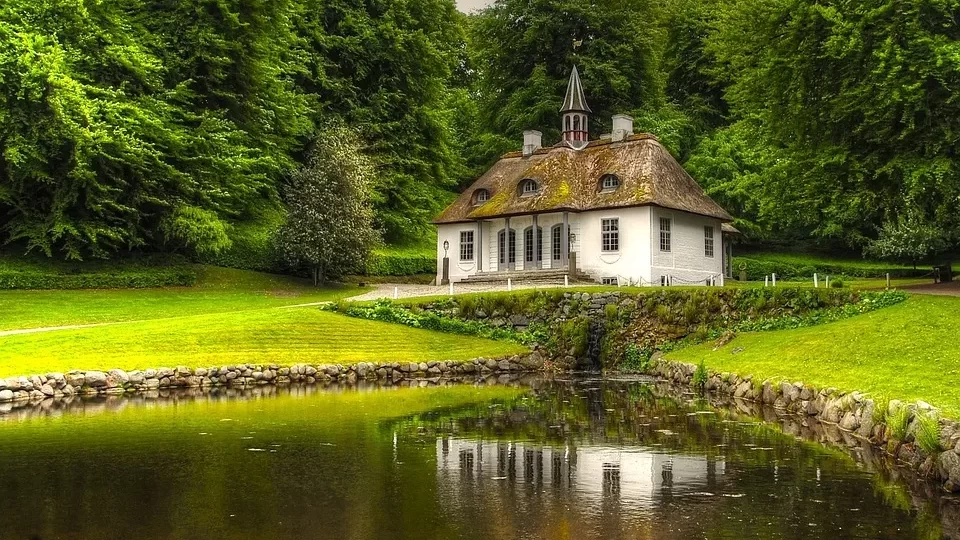
The Mons
Outside Burma – a country I call since 25 years home – and the rest of Southeast Asia the Mon people are practically not known. The aim of this article is to combine different parts of the history of the Mon who were the first civilisation settling in south-east Asia, in general, and in the area known as Burma, in particular, into a single and coherent whole and to present it with focus on what is nowadays Burma before the public at large as detailed as necessary and brief as possible.
The history of the Mons, a once most powerful people in what much later became Burma (and Thailand) is long, eventful and colourful. It is a much longer history than that of the Bamar/Burmans, Burma’s largest ethnic minority.
Their story is about immigrants who settled down in what is now south Burma because, firstly, the region was very sparsely populated, secondly, here they had a most fertile river delta and the monsoonal plains, which they cultivated and transformed into vast areas of rice lands and, thirdly, access to the open sea.
It is a story about an exiled Queen who escaped murder, a legendary king with three eyes, mythical ducks one sitting on the back of the other, the rise and fall of mighty kingdoms, murder and assassination, holy scripts, a ‘religion’ that would later become the ‘religion’ of the people of Burma and beyond, magnificent pagodas and monasteries, a cave housing thousands of Buddha images, Burma’s largest and oldest (1020 years at the time of this writing) reclining Buddha statue, a monk who completely changed the course of the development of entire kingdoms, another monk who became a powerful King, a princess who fled from her father’s court, later became a Queen and donated her body’s weight in gold to a pagoda the Mon have built and to which development she has significantly contributed. It is also a story about pogroms and ethnic cleansing.
The first years of the Mon’s history are largely shrouded in mystery and peppered with legends, but it is safe to say that their comparatively high civilisation was the most influential in early Southeast Asia and introducing Theravada Buddhism, a new culture and political system into this region has decisively contributed to the development of the later here emerging countries and has left clear imprints on their cultures; especially on present-day Burma and its people.
Once starting historical research on the Mons and their kingdoms one is in Burma soon finding oneself confronted with other problems of historical research than the usual ones. What I mean formulated Professor G. H. Luce, a leading and renowned Burma scholar as follows: “The to this day continuing serious attempts to ‘rewrite’ present Burma’s as well as Bagan’s (former Pagan’s) history by the Burmans has its roots in their strong desire to let the Burmans appear in a better light and raise their status, antiquity and importance with respect to the part the Burmans have played in the development of Burma by downplaying the huge contribution the Mon and Pyu have made compared to which that what the Burmans have actually contributed is rather small. In other words, the development of the Burmans as both a people and state hugely benefitted from the comparatively high developed cultures and high standards of civilization of the Mon and Pyu.”
What further complicates research of the Mon and their history is that from 1057 on when Thaton was conquered by king Anawrahta of Pagan most historical records of the Mons were destroyed.
The first immigrants that put down roots in the Sittaung Valley sometime between 2500 BC and 1500 BC were the Mons. They are like their ethnological relatives the (Mon) Khmer originally from Mongolia and migrated over centuries southwards through the main migration route leading from western China to north Thailand, south Thailand and present-day Burma. They first populated the Sittaung valley. Later they extended westwards to the Ayeyawaddy River Delta and did, finally, inhabit and control the entire south. Another migration route taken by Mons led through India.
Looking closely at the emergence and history of the Mons and their kingdoms one cannot help but recognise that one of the most significant and spectacular stories of south-east Asia is unfolding before one’s eyes.
Dvaravati
The first Mon kingdom – the Dvaravati Kingdom (650 BC – 1292) – was established in what is nowadays Thailand.
However, the name ‘Dvaravati Kingdom’ is just a catch-all for a conglomerate of several co-existing smaller Mon kingdoms and city states of which, finally, only the small Mon kingdom Hariphunchai survived as independent kingdom in that it managed to fend off several attempts of the mighty Khmer to conquer the kingdom. Hariphunchai was part of a confederation of Mon kingdoms and states that included the Mon kingdom of Thaton as ‘sea port’.
Thaton/Suvarnabhumi
Actually, it is not correct to use the name ‘Thaton’ for this is the Burmese translation from the city’s original Mon name ‘Sadhuim’ or ‘Sudhamma’, derived from the Pali name ‘Sudharam, ‘The mood hall of the gods’ in modern language ‘The city of good law’ but I will use ‘Thaton’ throughout this article.
After putting down roots at the estuaries of the Sittaung, Thanlwin, Attaran and Gyaing River, the Mon founded the First Mon kingdom as part of Suvarnabhumi or Golden Land.
In the sixth century B.C. Suvarnabhumi is extensively and full of praise mentioned in ancient Chinese, Indian and Singhalese texts – and it was already a flourishing Mon kingdom at a time when Burma did not exist and the arrival of the first Bamar was still roughly 1,100 years away.
That the Thaton kingdom, comprising the city and the entire present-day Thaton, Bilin and Kyeik-Hto regions was ‘The Golden Land’, Suvarnabhumi, is not agreeable to all historians. I do also not agree in so far as the name Suvarnabhumi cannot be confined to the Thaton kingdom because as far as the Mon kingdoms in present-days Burma and Thailand are concerned we have to keep in mind that at the times in question the countries Burma and Thailand did not exist and that the Mon-controlled area covered large parts of that area from which later Thailand and Burma emerged. Against this backdrop it is understandable that Thailand also claims to be Suvarnabhumi. Only, the Thai do conveniently forget to mention that Thailand did not exist at the time of Suvarnabhumi. Additionally, almost all of what is now Lower Burma was under the dominion of Mon kingdoms. Whereas the entire north-west and the western part of the central area of present-days Burma was controlled by the Pyu. This means that prior to the beginning of the first Anglo-Burmese War in 1824 no ‘Burma’ existed but only kingdoms; the Pyu/Arakan kingdoms, the Mon kingdoms, the Shan kingdoms and the Bamar kingdoms. The distinction ‘Lower Burma’ and ‘Upper Burma’ exist only since 1852, after the British had annexed the Pegu region, which they named ‘Lower Burma’. What remained of the Burman’s kingdom in the north they called ‘Upper Burma’.
By the way, there are different ways of spelling ‘Suvarnabhumi’, which is e.g. also spelled ‘Suvannabhumi’ or ‘Suwannabhumi’. I spell it ‘Suvarnabhumi’.
When we look at the vast area that was under Mon control already at the time of Gautama Buddha, it becomes clear why the Mon people are one of the most influential ethnic groups not only in what was to become Burma but in all of Southeast Asia. Thaton was the corner stone for future Mon kingdoms, one of which lasted all told 254 years and has covered almost the entire area of today’s Burma.
The language spoken by the Mon people is different from the Bamar and Thai language, and belongs to the Austro-Asiatic language family of the Monic branch. Mon is primarily spoken in Mon State but also in other parts of southern Burma such as the Kayin State and in the northern Tanintharyi region. What concerns the Mon script it is a Brahmi-style syllabic alphabet that was in Pagan’s ‘Mon era’ adopted by the Burmans as basis to develop their own scripture because they had never before an own written language.
According to archaeological findings Old Thaton stretched over an area of 1 square mile/2.6 square kilometres. It was of rectangular form surrounded by city walls (inner walls and outer walls) measuring in south – north direction 6.594 ft /2.010 m and in west – east direction 4.232 ft /1.290 m. The walls were massive, made of large bricks, had predominantly rounded corners and were up to 45 ft/15 m thick.
Old Thaton was – like present Thaton – located east of the Andaman Sea. With the sea in the west and the Martaban range in the east the channelling of water into the city was cleverly managed and secured by a well-thought through system of channels and tanks using the local topography to draw and store the fresh water coming down the mountain slopes in larger and smaller streams. Against flooding from the seaside the city was protected by the elevation with the harbour site lying on a lower level than the city. The palace compound has been located in the south-eastern part of Thaton city close to the Shwezayan pagoda. Unfortunately, the new Thaton was built partly over and partly within the old Thaton. I am still looking for the answer to the question why this was made. Is the answer, ‘because Thaton was almost completely destroyed by king Anawrahta’s forces’? The fact remains that the building of the new Thaton over and within the old Thaton makes archaeological survey and excavations a more difficult than usual task. And more excavations and surveys need to be conducted in the areas of Old Thaton about which is surprisingly little known and in Winka, Kyaikkatha, Taikkala, Zokthok and Mawlamyine, etc. to find concluding answers to the question what Old Thaton looked like and to learn more about the story of and secret behind the legendary Suvarnabhumi.
More recent important findings in e.g. form of finger marked bricks, remnants of brick buildings built with finger-marked bricks dating back to the 6th century AD and other historical evidence such as artifacts, potsherds, pottery, votive tablets, beads, terracotta Buddha statues and coins possibly from even earlier times at the a.m. locations are very encouraging and promise that there is much more to find that will help to answer the many open questions related to Thaton and the Mons history.
The Thaton kingdom flourished for some 1550 years, from its founding in about 500 BC, till it was conquered by the Pagan forces in 1057, what put an end to the Thaton kingdom and the 25 year long reign (1032 to 1057) of the 59th and last Thaton Dynasty king Manuha.
The conquering of Thaton and the deportation of the Mon kingdom’s elite to Pagan ushered in ‘Pagan’s Golden Era’. Especially under the reign of King Kyanzittha (r.1084 to 1112) the establishment of the Mon culture was paramount and ironically perhaps but definitely not surprisingly the culture of the highly civilised Mon became supreme in Pagan. The Mon language replaced Sanskrit and Pali in royal inscriptions, all arts, incl. architecture experienced a tremendous boost and Theravada Buddhism became predominant. This was as I like to see it the Mons’ way of turning defeat into victory. The Pagan kingdom is since long a thing of the past (only the remnants of its capital Pagan still exist) whereas the Mon culture that was adopted by the Bamar, the Mon script based on which the Bamar script was developed and the Theravada Buddhism still live on as integral part of the so-called ‘Burman’ culture.
But with the end of the Mon kingdom of Thaton the story of the glorious times of the Mon and their kingdoms is not over. Thaton was just the beginning. As important a stage as it was in the Mon’s history it was nothing compared to what would happen 230 and more importantly even 369 years later.
Today, Thaton is a rather sleepy city. The region has a total population of some 120,000. In result of natural landfill (silting) the city is now located some 16 miles land inwards and has no harbour anymore. However, the in insider circles well-known U San Win, Archaeologist and retired Assistant Director of the Ministry of Culture who specialises in the historical research of Suvarnabhumi is of the opinion that Thaton was an inland harbour city and never located directly at the Andaman Sea (Gulf of Martaban) but connected to it by a canal; an interesting hypothesis. I do not say that this is impossible but do prefer to stick with the traditional opinion that Thaton was located directly at or very close to the shoreline on the Gulf of Martaban until San Win’s thesis is proven right.
Without its impressive history Thaton would be just another city with nothing much to write home about. Apart from some remnants of the city walls there is nothing that indicates that this city was indeed the royal capital of a once powerful Mon kingdom and a formerly busy and prosperous port city and trading centre.
Modern Thaton is connected by roads and railway to all parts of the Mon State and the rest of Burma. After this brief excursion into the present I will now return to the past.
After Thaton was conquered the former Mon kingdom was for 230 years a vassal state of the kingdom of Pagan. But then in 1287 things began to change dramatically with the defeat of Pagan’s army by the forces of Kublai Khan.
The Mongol Invasion resulted in the collapse of the Pagan kingdom in 1287. In consequence of this Pagan became – with former king Narathihapate’s son Kyaw Zwa (r. ca. 1287 to 1297) as puppet king – a vassal state of the Mongols and was integrated into the Mongol empire (province of Cheng-Mien).
Having lost all its power and virtually ceased to exist as central authority Pagan lost all of its vassal states, namely, Pegu, Taungoo and Prome. These regained their independence and the starting signal for the emergence of a second Mon kingdom, the Hanthawaddy kingdom that would become much more powerful than the Mon kingdom of Thaton (and much more powerful than any other post-Bagan kingdom of the Burmans), was given. But it would take 100 more years for the Mons to be ready to make their dream come true.
Hanthawaddy/Ramannadesa
In 1253 a man who was given the name Magadu was born in a village a few miles north of Thaton. He would 34 years later in 1287 be the founder of the 2nd Mon kingdom, the Hanthawaddy kingdom also known as Ramannadesa or Pegu kingdom. From April 1287 to his assassination on January 1307 he reigned as king Wareru, the 1st Hanthawaddy king, from his capital Martaban (Mottama) a kingdom that was nominal a vassal state of the kingdom of Sukhothai, reigned by his father-in-law, king Ram Khamhaeng. In 1330 Ramannadesa became formally independent of the kingdom of Sukhothai.
As great as King Wareru’s achievements were one thing he is often credited for he did not do and that is uniting the three power centres of Monland. This happened eight kings and 104 years later in 1391 and was achieved by king Razadarit. But the foundation of the powerful future Mon Kingdoms was laid. King Wareru was succeeded by his brother Hkun Law, who reigned from January 1307 to March 1311.
Mon king Razadarit of the house Wareru, the son of Mon king Binnya U had succeeded in unifying the three disharmoniously side by side existing Mon regions Ayeyawaddy Delta (under command of his uncle Laukpya), Pegu, the legitimate Hanthawaddy kingdom ruled by prince Binnya Nwe’s father king Binnya U, grandnephew of the kingdom’s founder, King Wareru, (under command of princess Mahadevi, the deceased king’s sister and her lover Smim Maru) and Martaban (under command of king Binnya U’s son-in-law, Byattaba, a rebellious governor) after being proclaimed king at the age of 16 years on 02 February 1384. But now I am a bit ahead of the actual events. Let me tell you this part of the story from the beginning and in more detail.
The later king Razadarit’s birth name was Binnya Nwe. His title was prince and he was rightful heir to the throne. King Binnya U’s family was already long before his death marked by difficult and strained relationships, to say the least, because members of the family were busy with scheming and planning with respect to matters of succession to the throne.
Rivals to the ascension of the throne of Pegu were Princess Mahadevi, King Binnya U’s sister (to be more precise her lover Smim Maru who wanted to become king and had her support), and Laukpya, King Binnya U’s brother. Each of these two parties wanted to get the throne. Therefore, they had to do away with the respective other rival and Princess Mahadevi and her brother Laukpya were of one opinion that the first one to be taken out of the race was King Binnya U’s 15 year old son, prince Binnya Nwe, who as the king’s only son was sure to become the successor of his father. This needed to be prevented.
Having been informed of the intrigues Binnya Nwe feared to be murdered and had been running away to Dagon (the later Rangoon) with his half-sister Talamidaw to start a rebellion against his father Binnya U and that is where Binnya Nwe’s rivals to the throne went with their armies, to Dagon, only to find it fortified and Prince Binnya Nwe together with a small army made up partly of loyal regular troops and partly mercenaries ready to put up a fight. Laukpya’s and Byattaba’s forces withdrew after a few days of siege but Smim Maru wanted to solve the problem ‘Binnya Nwe’ once and for all; but this was not a good idea. His army was defeated, he was executed. Binnya Nwe marched to Pegu with his small army and was welcomed by the ruling elite and crowned because his father king Binnya U had after having pardoned his son and daughter and spent some time on the death bed passed away two days prior to Binnya Nwe’s arrival in Pegu. Binnya Nwe was made the 9th king of Hanthawaddy (Pegu) on Monday, 4 January 1384, with the regnal name Rajadhiraj (Pali, King of Kings) known as king Razadarit. Now being king of Pegu (Hanthawaddy), Smim executed, Smim’s army defeated, Mahadevi pardoned and brought into line in exchange for giving her Dagon as fief and Pegu firmly under his control king Razadarit could start to try to unify the Mon under his command; and that he did. However, things did not go as well as he had wished for because his uncle Laukpya of Myaungmya was definitely not willing to submit to the much younger king Razadarit. Well knowing that it was questionable that he would be victorious when it came to war with king Razadarit, Laukpya requested help from king Swasawke of Ava offering in return his submission to him. Swasawke did happily grant the request with the ulterior motive to extent his kingdom by invading the Hanthawaddy kingdom and bringing it under his control because what he badly needed was direct access to the Gulf of Bengal in order to start profitable trade with foreign countries. Against the backdrop of this Laukpya’s offer was godsend.
Meanwhile king Razadarit was busy with planning and preparing measures to consolidate all of the Mon regions what made it necessary to use force because neither Laukpya who controlled the Ayeyawaddy delta in the west nor Byattaba who controlled Martaban in the east were willing to submit to Razadarit. However, he had first to defend his Hanthawaddy kingdom centred about Pegu against invasion attempts of Ava king Swasawke (the reason for the 40 Years War between Pegu and Ava) who attacked from north and Laukpya who attacked from the west. This, Razadarit did successfully. He fended off the first invasion attempt in 1386 and the second one in 1387. This would not have been possible without important help. King Razadarit was a fierce, courageous and feared fighter who would later have many victories in single combat to his belt but he had no knowledge in the art of warfare. But he was lucky to have well knowledgeable and battle-hardened officers like the generals Lagun Ein, Emuntaya and Byat Za who would teach him the art of war and win many future battles and wars for him.
However, victory over Ava’s forces did not happen without serious losses and it had become very clear that Razadarit had to urgently re-unite the Mons if he wanted to stand a fair chance against the strong forces of the kingdom of Ava.
In late 1388 he attacked Martaban and conquered it in early 1389. He had now the centre (Pegu), the north-east and south-east (Martaban) of his kingdom consolidated, thus created the prerequisite to fully concentrate on the last problem, his uncle Laukpya of Myaungmya. This, however, turned out to be a nut much harder to crack than he had expected although he was well aware that defeating Laukpya was a tall order.
In early 1389 Razadarit marched on Myaungmya but knowing that the city would be heavily fortified he wanted to conquer Pathein first. Pathein is situated some miles north-west of Myaungmya and Razadarit thought that conquering Pathein would be much easier than conquering Myaungmya what he intended to do after Pathein was taken. This plan looked nice on the paper but did not pass the test on the battlefield. After heavy battles with land and naval forces and large numbers of casualties Razadarit’s first attempt to add the Ayeyawaddy delta and the southern part of Arakan to his kingdom had failed. Laukpya also sustained heavy losses without – contrary to Razadarit – having the possibility to easily replenish things that were urgently needed. Therefore he decided to leave Myaungmya. It is not clear what he took with him but it is said his family and gold, silver and precious stones loaded on 10 elephants. Razadarit’s general and advisor Byat Za was informed that Laukpya had left for Prome and accompanied by a group of soldiers Byat Za immediately set out to catch Laukpya.
Getting the message that he was being pursued, Laukpya changed plan and fled to Thandwe in Arakan. He was followed by Byat Za who attacked the city. The ruler of Thandwe chose to take the easy way out handed Laukpya over to Byat Za who took him prisoner and returned home.
As for what happened to Laukpya after being captured there are different reports. Some draw a line under his being captured and leave it at that. Others say he was executed, yet others say that he died and there are also some who say he was pardoned. What concerns his son Nawrahta and son-in-law Pyanchi under whose command Pathein was successfully defended against Razadarit’s forces it is reported that they managed to escape to Ava. There they were made Lord of Salin (Nawrahta) and Lord of Prome (Pyanchi) by the King of Ava. They would meet again a few years later in similar situations; Razadarit’s forces as attacker and Nawrahta and Pyanchi as defender.
Meanwhile Razadarit had prepared for a final military campaign to subdue the Ayeyawaddy Delta Region in 1390 but hearing that the Lord of Myaungmya was taken prisoner by Razadarit the defender of Myaungmya and Pathein surrendered unconditionally. With that Razadarit had accomplished his mission to consolidate all of what is now lower Burma and to unite the formerly independent regions Martaban, Pegu and Ayeyawaddy Delta.
After a short phase of resting, celebrating, praying and meritorious offerings (a time in which Razadarit is also getting rid of his wife Talamidaw and his son Bawlawkyantaw, in a very, nasty way) he is making preparations to swing into action the next step to expand his realm in northward direction: conquering Myanaung, located south of Prome at the Ayeyawaddy River. It is one of the Ayeyawaddy delta’s northernmost cities by river some 180 miles/112 kilometres north-east of Pathein and under Ava’s control.
Not wasting any time Razadarit makes good use of his newly gained domain Pathein and assembles large naval and land forces to attack Myanaung. He is successfully doing this in 1391 and turns Myanaung into a well-fortified garrison for his troops. Now his forces are about 140 miles/87 kilometres south of Prome the next object of his desire.
He moved with his land and naval forces upriver and laid siege to Prome. King Swasawke’s response was to send his troops to meet the Hanthawaddy forces and stop Razadarit’s advance. However, before it came to an open battle the two negotiated a truce that would last from 1391 to 1404. Razadarit called off the siege and his troops retreated to Myanaung.
3 months prior to his 70th birthday king Swasawke died in April 1400 what plunged Ava into a succession crisis that was accompanied by intrigues, assassinations and blackmailing. The crisis ended in 1401 with the coronation of Minhkaung I, Swasawke’s eldest son who was initially not supported by the ruling elite a fact that had actually triggered the ascension problems.
In 1404 Razadarit attacked the Ava kingdom on a large scale with the ultimate objective being to take Ava, finalise the conquest of the kingdom of Ava and to add it to his Hanthawaddy kingdom. His assaults on Ava and Prome failed but neither side was capable to win the war by military means alone. Subsequently, what remained for Razadarit’s forces to do was to lay siege to the towns and starve the inhabitants out. This worked out well because it forced Minhkaung I to submit and negotiate a truce in 1406.
However, this truce was to last for a few months only for Ava kept on fighting and conquered in 1406 Kale in the north, Mohnyin in the north-east and Arakan in the west of the kingdom of Ava. This, of course, was unacceptable to Razadarit and forced him to let the truce be truce and continue the war against Ava. He marched on Arakan and quickly chased Ava forces out of it.
The fighting went on and on with neither side being strong enough to deal the all deciding final blow to the opponent. In the cause of the war Territories were gained, lost and regained while both sides had to suffer heavy losses in terms of enormous sums from the war chest, which to re-fill became increasingly difficult, human lives, animals, agricultural produce, destruction of buildings and infrastructure, ships, etc. As a matter of fact, entire kingdoms went virtually bankrupt due to enormous costs incurred by waging wars. Ava was no exception and met with the same fate because the war between Hanthawaddy and Ava left Ava financially and otherwise completely exhausted while the Hanthawaddy kingdom rose to formerly unknown greatness, might and power that lasted from 1426 to 1541 and went down in history as the most powerful kingdom of all post-Pagan kingdoms. But now I am again a bit ahead of myself.
The end of the ‘Forty -Years-War’ was mainly the result of the deaths of the life-long enemies king Razadarit of Hanthawaddy and king Minyekyawswa of Ava who were the driving forces of the war. King Minyekyawswa was in 1417 killed in battle and king Razadarit in 1421 by a wild elephant he wanted to tame.
About the time that followed from the end of the war with Ava in 1426 till 1534 (the Golden Age of the Hanthawaddy kingdom) not much is reported. These years were peaceful and prosperous years.
Whereas king Razadarit left a strong and wealthy Hanthawaddy kingdom that covered almost all of present-day Burma’s territory and lasted 108 peaceful years the formerly mighty and powerful kingdom of Ava plunged into a crisis and shrunk to the size of a small fiefdom.
The end of the Hanthawaddy kingdom’s glorious times began with the war against the much smaller and weaker Toungoo kingdom of king Tabinshwehti in 1535. The war was, finally, lost in 1541 with the fall of Mottama due to inaptness of Hanthawaddy king Takayutpi,; a shameful defeat for it was self-inflicted and absolutely preventable.
Restored Hanthawaddy
199 years later the Mon successfully revolted against the kingdom of Toungoo and founded the Restored Hanthawaddy kingdom that ruled till 1751 large parts of lower and central Burma and after having taken Ava in 1752 additionally all of upper Burma. However, this kingdom was with 17 years short-lived. Its fall in 1757 put an end to the independence of the Mon; since then the Mon are a people without country. The Mon people, their civilisation, culture and language are from this time on under the serious threat to be extinguished what to do the Bamar tried in the cruellest ways possible.
The end of the Restored Hanthawaddy kingdom in 1757 was like the end of the Hanthawaddy kingdom self-inflicted. In both cases the defeat was rather due to the weakness of their kings and ruling elites than the strengths of the respective Burman counterparts.
Like all of the Bamar kingdoms the Mon kingdoms rose and fell but there are important differences between the Bamar kingdoms and the Mon kingdoms. These are that a) the 3 Mon kingdoms (Thaton, Hanthawaddy and Restored Hansawaddy) were the ones that with, all told, some 1830 years lasted (compared to all told some 840 years of 8 Bamar kingdoms) longest of all, that b) Thaton was the first of all kingdoms that ever existed in what is now Burma, that c) the Mon kingdoms had the highest standard of civilisation. Therefore no other kingdoms left marks as distinguished as theirs.
ca domain name
#Mons #Kingdoms #Suvarnabhumi
Post byBedewy for info askme VISIT GAHZLY









